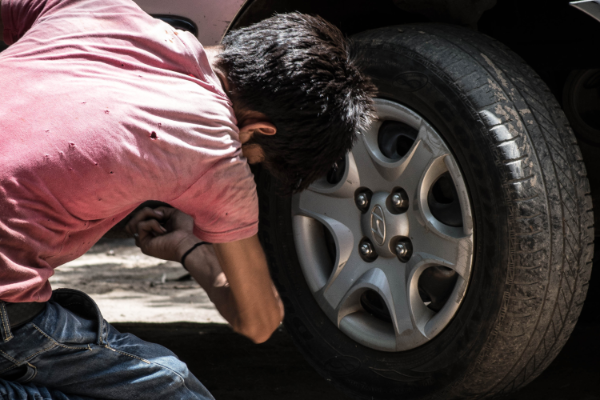Breakdowns General
Many breakdowns are the result of
- neglect
- failing to make routine checks
- inadequate preventive maintenance
- abuse of the vehicle.
Preventive maintenance will reduce the likelihood of a breakdown. However, even a well-maintained vehicle can break down occasionally.
Don't drive on ignoring noises or symptoms which are unusual or if you're concerned that the problem might be serious.

Breakdowns Be Prepared
Carry a tool kit in your vehicle. The following items are useful to keep for emergency use
- a warning triangle (or other permitted warning device)
- spare bulbs and fuses
- a torch
- vinyl tape
- wire
- jump leads
- a tow rope
- pliers
- a plastic container of water.

Breakdowns National Organisations
By joining a national organisation or taking out breakdown insurance, you'll save a great deal of time and money if you break down.
Most services include an option to take you, your vehicle and passengers either to your destination or to your home.
The annual fee is usually less than the cost of a single motorway breakdown call-out.

Breakdowns Permitted Warning Devices
There are various warning devices that you can buy to place on the road to warn other drivers when you have broken down. Don't use any of these warning devices
- on a motorway
- as an excuse to leave your car in a dangerous position.
- Advance warning triangles
- Advance warning triangles fold flat and don't take up much space in the car. You should carry one and use it to warn other road users if your car is obstructing the highway or is in a dangerous position as a result of a breakdown or an accident.
- Where to position the triangle
- You should place the triangle on the road, well back from the car.
- On a straight level road: put the triangle 45 metres (147 feet) from your vehicle.
- On a winding or hilly road, put the triangle where drivers will see it before they have to deal with any bend or hump in the road.
- On a very narrow road put the triangle on the nearside verge or footpath.
- Other warning devices
These include traffic cones, flat traffic delineators (which resemble a flattened cone) and traffic pyramids. At least four of any of these should be placed in a line behind your vehicle to guide traffic past. A flashing amber light may be used with any of these warning devices, but may not be used on its own.
Alternatively, a flexible yellow sheet displayillg a red triangle can be placed on the vehicle, provided it does not obscure the number plate, lights or reflectors.

Breakdowns When you break down
As a general rule, brake as gently as possible and pull over as far to the left as possible to keep your vehicle away from approaching traffic.
If the breakdown affects your control of the car
- try to keep in a straight line by holding the steering wheel firmly
- avoid braking severely
- steer gently on to the side of the road as you lose speed.
- use your hazard warning lights to warn others
- keep your sidelights on if it is dark or visibility is poor
- do not stand behind your vehicle where you might obscure the lights
- use a warning device, particularly if you've broken down near a bend, or over the brow of a hill. Do not use one if you have broken down on a motorway.
If possible, get your car well off the road and
Keep children and animals under control, and away from the road.
Contact the police if your vehicle is causing an obstruction, and a breakdown service you're unable to rectify the fault yourself-
Don't
- ask for help from passing strangers
- accept help from strangers
- leave your vehicle for any longer than you really have to.
Drivers travelling alone
You might feel vulnerable if you're travelling alone and you break down, especially on an isolated stretch of road, a dual carriageway or a motorway.
You should spend as little time as possible away from your vehicle.
When you telephone for assistance, make it clear to the operator that you're travelling alone.
Priority will often be given in these cases.

Breakdowns Being towed
If your vehicle cannot be repaired where it has broken down, it will need to be moved.
There are three options
- >
- being recovered by a breakdown organisation you belong to (the best)
- calling out a local garage (probably the most costly)
- being towed by a friend (the most dangerous - should in no circumstances be considered by an inexperienced driver).

